Lisa Allardice in The Guardian:
 For the Ishiguro household, 5 October 2017 was a big day. After weeks of discussion, the author’s wife, Lorna, had finally decided to change her hair colour. She was sitting in a Hampstead salon, not far from Golders Green in London, where they have lived for many years, all gowned up, and glanced at her phone. There was a news flash. “I’m sorry, I’m going to have to stop this,” she said to the waiting hairdresser. “My husband has just won the Nobel prize for literature. I might have to help him out.”
For the Ishiguro household, 5 October 2017 was a big day. After weeks of discussion, the author’s wife, Lorna, had finally decided to change her hair colour. She was sitting in a Hampstead salon, not far from Golders Green in London, where they have lived for many years, all gowned up, and glanced at her phone. There was a news flash. “I’m sorry, I’m going to have to stop this,” she said to the waiting hairdresser. “My husband has just won the Nobel prize for literature. I might have to help him out.”
Back home, Kazuo Ishiguro was having a late breakfast when his agent called. “It’s the opposite to the Booker prize, where there’s a longlist and then a shortlist. You hear the rumbling thunder coming towards you, often not striking. With the Nobel it is freak lightning out of the blue – wham!” Within half an hour there was a queue of journalists outside the front door. He called his mother, Shizuko. “I said: ‘I’ve won the Nobel, Shon.’ Oddly, she didn’t seem very surprised,” he recalls. “She said: ‘I thought you’d win it sooner or later.’” She died, aged 92, two years ago. His latest novel Klara and the Sun, in part about maternal devotion and his first since winning the Nobel, is dedicated to her. “My mother had a huge amount to do with my becoming a writer,” he says now.
We are talking on Zoom; he is holed up in the spare bedroom, his daughter Naomi’s undergraduate books on the shelves. His own study is tiny, he says, just big enough for two desks: one for his computer, the other with a writing slope – no one goes in there. Encouragingly, he compares the interview process to interrogation, borrowing from a scene in John le Carré’s Tinker Tailor Soldier Spy that explains how agents are trained to withstand torture by having layers of plausible backstories, “until they are just a shrieking head”. Yet he submits to questioning with good humour; in fact talking for several hours with the exacting thoughtfulness you’d expect from his fiction.
More here.
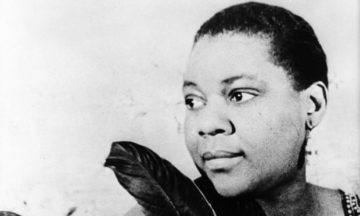 This timely republication of Bessie Smith, with a new introduction extolling hercontinued relevance, charts some of the distance travelled both by the publishing industry and by Kay herself, now Scotland’s makar, or poet laureate. Time hasn’t dimmed the book’s restlessly creative scholarship. Mixing academic rigour, authorial autobiography and poetic licence, this slim text’s selected bibliography runs to 22 titles. Throughout, Kay traces the heyday of the blueswomen, from the voodoo queens to the era of wax and “race records”, where copyright was still in the future and royalties optional.
This timely republication of Bessie Smith, with a new introduction extolling hercontinued relevance, charts some of the distance travelled both by the publishing industry and by Kay herself, now Scotland’s makar, or poet laureate. Time hasn’t dimmed the book’s restlessly creative scholarship. Mixing academic rigour, authorial autobiography and poetic licence, this slim text’s selected bibliography runs to 22 titles. Throughout, Kay traces the heyday of the blueswomen, from the voodoo queens to the era of wax and “race records”, where copyright was still in the future and royalties optional.
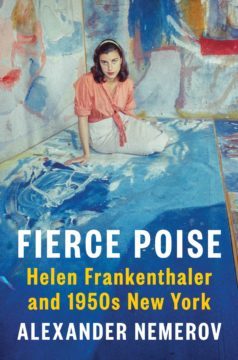 “Fierce Poise” focuses on the artist in an unconventional way: It covers the years 1950-60 in 11 chapters, each jumping off a specific date during one of those years. The resulting book is lively but short, skimming the surface of Frankenthaler’s work. Nemerov calls this choice “true to Helen” in that “the singularity of a day offers me an unscientific precision — a fluid glimpse into a moment — like Helen’s own.” The conceit is that the early days capture the essence of her work, but the constraint only shortchanges her contested legacy by eliding the rest of her long career.
“Fierce Poise” focuses on the artist in an unconventional way: It covers the years 1950-60 in 11 chapters, each jumping off a specific date during one of those years. The resulting book is lively but short, skimming the surface of Frankenthaler’s work. Nemerov calls this choice “true to Helen” in that “the singularity of a day offers me an unscientific precision — a fluid glimpse into a moment — like Helen’s own.” The conceit is that the early days capture the essence of her work, but the constraint only shortchanges her contested legacy by eliding the rest of her long career.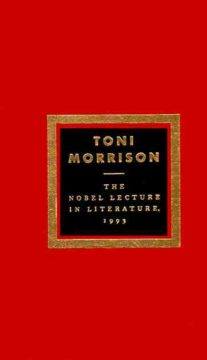 February 18, 2021 would have been
February 18, 2021 would have been  For the Ishiguro household, 5 October 2017 was a big day. After weeks of discussion, the author’s wife, Lorna, had finally decided to change her hair colour. She was sitting in a Hampstead salon, not far from Golders Green in London, where they have lived for many years, all gowned up, and glanced at her phone. There was a news flash. “I’m sorry, I’m going to have to stop this,” she said to the waiting hairdresser. “My husband has just won the Nobel prize for literature. I might have to help him out.”
For the Ishiguro household, 5 October 2017 was a big day. After weeks of discussion, the author’s wife, Lorna, had finally decided to change her hair colour. She was sitting in a Hampstead salon, not far from Golders Green in London, where they have lived for many years, all gowned up, and glanced at her phone. There was a news flash. “I’m sorry, I’m going to have to stop this,” she said to the waiting hairdresser. “My husband has just won the Nobel prize for literature. I might have to help him out.” For a critic, there’s maybe nothing so central but also confounding as the question of taste — why we like what we like, and whether it’s something we decide for ourselves, based purely on our own freedom and idiosyncracies; or if our tastes can be shaped and even scripted, influenced by earnest argument, entrenched biases or cynical manipulation.
For a critic, there’s maybe nothing so central but also confounding as the question of taste — why we like what we like, and whether it’s something we decide for ourselves, based purely on our own freedom and idiosyncracies; or if our tastes can be shaped and even scripted, influenced by earnest argument, entrenched biases or cynical manipulation. 1. Always refer to Iran as the “Islamic Republic” and its government as “the regime” or, better yet, “the Mullahs.”
1. Always refer to Iran as the “Islamic Republic” and its government as “the regime” or, better yet, “the Mullahs.”
 The anti-government stinginess of traditional conservatism, along with the fear of losing social status held by many white people, now broadly associated with Trumpism, have long been connected. Both have sapped American society’s strength for generations, causing a majority of white Americans to rally behind the draining of public resources and investments. Those very investments would provide white Americans — the largest group of the impoverished and uninsured — greater security, too: A new Federal Reserve Bank of San Francisco study
The anti-government stinginess of traditional conservatism, along with the fear of losing social status held by many white people, now broadly associated with Trumpism, have long been connected. Both have sapped American society’s strength for generations, causing a majority of white Americans to rally behind the draining of public resources and investments. Those very investments would provide white Americans — the largest group of the impoverished and uninsured — greater security, too: A new Federal Reserve Bank of San Francisco study  I grew up in one of those small Palestinian villages where some of Nimr’s readership likely stems from, quite close to where Nimr teaches. I read plenty of kid-lit on my way to school (and at school when I was supposed to be paying attention); I went on adventures with dragons and later, I traveled into deep space. I could have used a heroine like Qamar when I was younger to encourage me to step outside of my own reality. Not only does she look like me, Qamar feels written for me. I see much of my upbringing in Qamar, in how I approach rest, play, work, and curiosity, even perhaps how I approach being a woman. Qamar moves at her own pace, and while she is concerned with survival, she also understands how to adapt, when to let something bizarre and even unjust become normalized, and when that is no longer acceptable.
I grew up in one of those small Palestinian villages where some of Nimr’s readership likely stems from, quite close to where Nimr teaches. I read plenty of kid-lit on my way to school (and at school when I was supposed to be paying attention); I went on adventures with dragons and later, I traveled into deep space. I could have used a heroine like Qamar when I was younger to encourage me to step outside of my own reality. Not only does she look like me, Qamar feels written for me. I see much of my upbringing in Qamar, in how I approach rest, play, work, and curiosity, even perhaps how I approach being a woman. Qamar moves at her own pace, and while she is concerned with survival, she also understands how to adapt, when to let something bizarre and even unjust become normalized, and when that is no longer acceptable. We realize then that from the fantastic opening image of the sea whom the poet would like to invite in, like a good neighbor, to have a coffee, to the powerful ending of “All of It,” each line of Exhausted on the Cross is the scene of a physical fight, to the death, between words and what we can no longer say. We cannot express the tension of that centimeter that separates us from the woman from Shatila. There are no words to name the absolute horror, to account for the exact moment in which the body of a living child becomes the body of a slaughtered child, we lack images to fix that infinitesimal second in which someone becomes those lumps of flesh and bone thrown into the sea by Latin American dictators, or the heaps of scattered limbs of Palestinians crushed by Israeli bombs in Gaza, or those massacred in the Sabra and Shatila refugee camps. We have no concepts to imagine what questions, what memories assail someone in that monstrous extreme, someone being killed by other men. And yet, for that very reason, precisely because those words do not exist, they must be shouted, to bring to this side of the world the terrible and ruthless porosity of each of those moments.
We realize then that from the fantastic opening image of the sea whom the poet would like to invite in, like a good neighbor, to have a coffee, to the powerful ending of “All of It,” each line of Exhausted on the Cross is the scene of a physical fight, to the death, between words and what we can no longer say. We cannot express the tension of that centimeter that separates us from the woman from Shatila. There are no words to name the absolute horror, to account for the exact moment in which the body of a living child becomes the body of a slaughtered child, we lack images to fix that infinitesimal second in which someone becomes those lumps of flesh and bone thrown into the sea by Latin American dictators, or the heaps of scattered limbs of Palestinians crushed by Israeli bombs in Gaza, or those massacred in the Sabra and Shatila refugee camps. We have no concepts to imagine what questions, what memories assail someone in that monstrous extreme, someone being killed by other men. And yet, for that very reason, precisely because those words do not exist, they must be shouted, to bring to this side of the world the terrible and ruthless porosity of each of those moments. The names most associated with Black Lives Matter are not its leaders but the victims who have drawn attention to the massive issues of racism this country grapples with: George Floyd, Breonna Taylor, Eric Garner, Michael Brown, to name a few. The movement can be traced back to 2013, after the acquittal of George Zimmerman, who shot and killed Trayvon Martin in Florida. The 17-year-old had been returning from a shop after buying sweets and iced tea. Mr Zimmerman claimed the unarmed black teenager had looked suspicious. There was outrage when he was found not guilty of murder, and a Facebook post entitled “Black Lives Matter” captured a mood and sparked action.
The names most associated with Black Lives Matter are not its leaders but the victims who have drawn attention to the massive issues of racism this country grapples with: George Floyd, Breonna Taylor, Eric Garner, Michael Brown, to name a few. The movement can be traced back to 2013, after the acquittal of George Zimmerman, who shot and killed Trayvon Martin in Florida. The 17-year-old had been returning from a shop after buying sweets and iced tea. Mr Zimmerman claimed the unarmed black teenager had looked suspicious. There was outrage when he was found not guilty of murder, and a Facebook post entitled “Black Lives Matter” captured a mood and sparked action.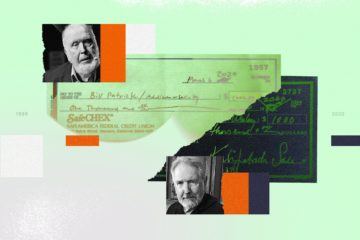 ON MARCH 6,
ON MARCH 6,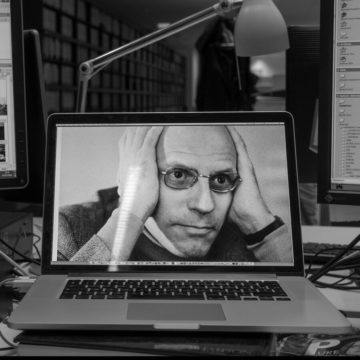 There are many kinds of pseudosciences: astrology, homeopathy, flat-Earthism, anti-vaxx. These ‘fields’ traffic in bizarre claims with scientific pretensions. On a surface level, these claims seem to be scientific and usually appear to comment on the same kind of things that science does. However, upon closer inspection, pseudoscience is revealed to be
There are many kinds of pseudosciences: astrology, homeopathy, flat-Earthism, anti-vaxx. These ‘fields’ traffic in bizarre claims with scientific pretensions. On a surface level, these claims seem to be scientific and usually appear to comment on the same kind of things that science does. However, upon closer inspection, pseudoscience is revealed to be  At first, an embryo has no front or back, head or tail. It’s a simple sphere of cells. But soon enough, the smooth clump begins to change. Fluid pools in the middle of the sphere. Cells flow like honey to take up their positions in the future body. Sheets of cells fold origami-style, building a heart, a gut, a brain.
At first, an embryo has no front or back, head or tail. It’s a simple sphere of cells. But soon enough, the smooth clump begins to change. Fluid pools in the middle of the sphere. Cells flow like honey to take up their positions in the future body. Sheets of cells fold origami-style, building a heart, a gut, a brain. First things first — much respect to Bill Gates for his membership in the select club of ultrabillionaires not actively attempting to flee Earth and colonize Mars. His affection for his home planet and the people on it shines through clearly in this new book, as does his proud and usually endearing geekiness. The book’s illustrations include photos of him inspecting industrial facilities, like a fertilizer distribution plant in Tanzania; definitely the happiest picture is of him and his son grinning identical grins outside an Icelandic geothermal power station. “Rory and I used to visit power plants for fun,” he writes, “just to learn how they worked.”
First things first — much respect to Bill Gates for his membership in the select club of ultrabillionaires not actively attempting to flee Earth and colonize Mars. His affection for his home planet and the people on it shines through clearly in this new book, as does his proud and usually endearing geekiness. The book’s illustrations include photos of him inspecting industrial facilities, like a fertilizer distribution plant in Tanzania; definitely the happiest picture is of him and his son grinning identical grins outside an Icelandic geothermal power station. “Rory and I used to visit power plants for fun,” he writes, “just to learn how they worked.”